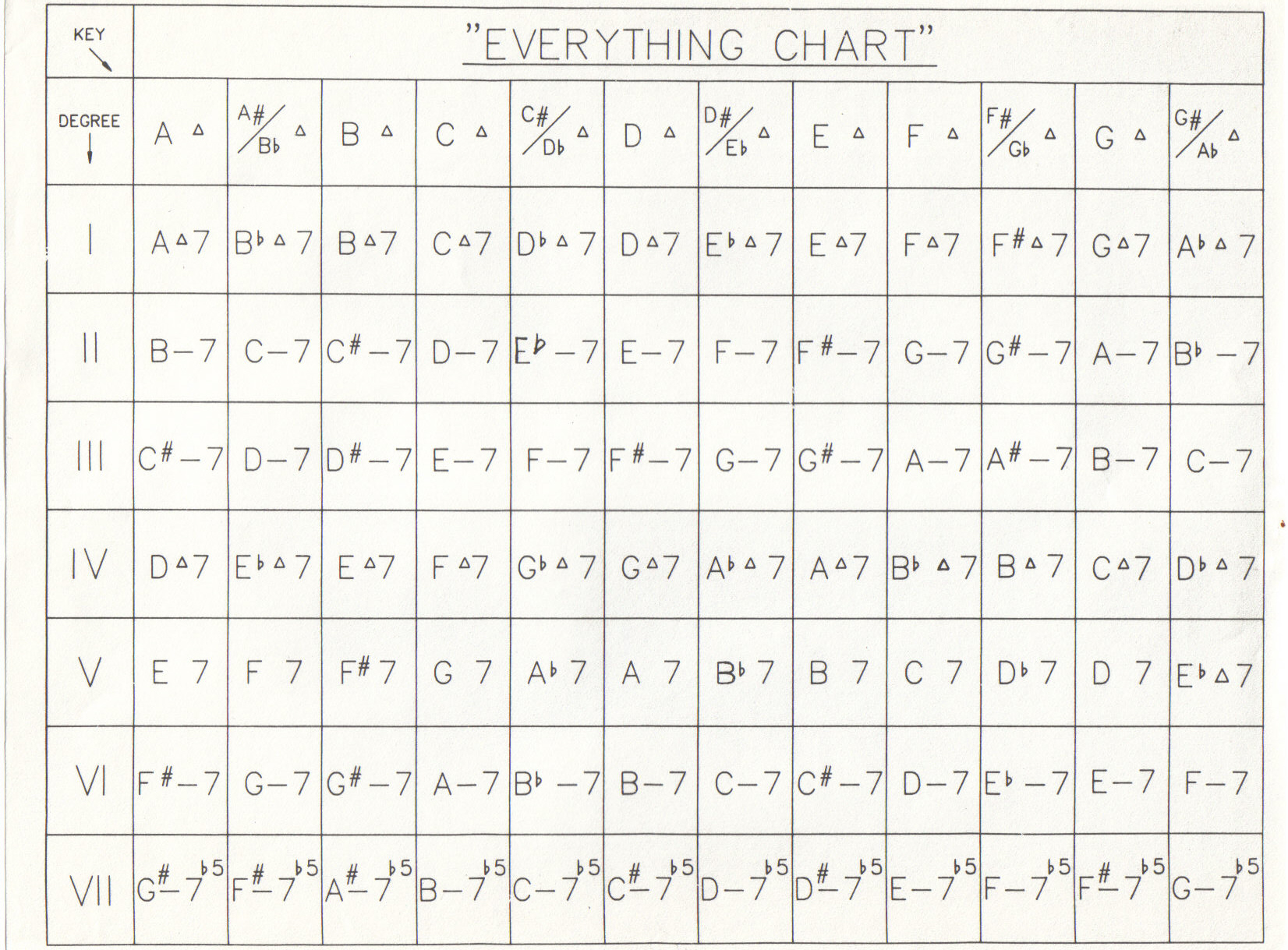Knowing and recognizing intervals forwards and backwards, both audibility and visually, will greatly improve your ear for harmonies as well as help you to gain control over your instrument. In other words, if we want to play a major third from "C", "E" would be "C's" major third. "C" to "E" is a major third but "E" to "C" is a minor sixth. To help you comprehend intervals forwards and backwards, I will list them here, because I believe this will be an enlightening lesson for you.
Audibles have their own spectrum of colors, just like visuals, but the society we live in trains our eyes not our ears. Imagine if traffic lights were pitches instead of colors. Some intervals that you hear but may not recognize - an ambulance's siren is in minor fifths and a tractor-trailer truck's horn is a minor second interval. These are intervals with a lot of tension, and when they are sound they get your attention and you react immediately.
Here is an interval association I came across. When I started playing guitar I did not have a electric tuner so I would tune by ear, using my mother's piano. One day after I was tuning my guitar, I went to make a phone call and I noticed that the dial tone on the phone was a major third (F and A), I was so enlightened to be able to tune my guitar to a dial tone on a phone. If you don't believe me, try it!
Here is another exercise that I use to do to practice my solfedge (ear training). I would get 3 to 7 drinking glasses and I would fill one glass up with water to a desired pitch (probably from the dial tone on my phone) and then I would construct intervals with the other glasses filling them up with water and building arpeggios and scales. I would play them separately, or I would play them simultaneously to play chords.
To perform modal/diatonic harmonies, you use the notes in that key. For example: if we are in the key of C Major and we want to harmonize a C Major arpeggio, you can play an E minor arpeggio over the C major arpeggio (you would be creating a modal third harmony). If you played an A minor arpeggio over the C major arpeggio you would be creating a modal sixth harmony. You can play modal harmonies over your arpeggios by playing the same arpeggio a diatonic third or sixth above or below the given arpeggio.
If we wanted to play a modal harmony over the 4th degree in the key of C major, which would be F Major, and we wanted to harmonize the F Major in modal/diatonic thirds, we would play an A minor arpeggio or A Aoelian mode over the F major arpeggio or F Ionian mode. If we wanted to play a modal sixth harmony over the F major we would play a D minor arpeggio / Dorian over the F major arpeggio / Lydian.
To perform parallel harmonies you will be playing sometimes outside the key, but you will notice sounds very attractive to your ear. Parallel harmonies are performed by choosing a desired interval (minor second, major second, minor third, major third, forth, minor fifth, fifth, etc.) and religiously playing the desired interval above or below the arpeggio, scale, or note you want to harmonize. For example, if we are in the key of C Major and we want to harmonize a C Major arpeggio in parallel 4ths, meaning every note in the C major arpeggio will be harmonized in a fourth. The C Major arpeggio has C, E, and G in its tonality, and we harmonize each note up a fourth. So we harmonize the C with an F, the E with an A, and the G with a C. So what we are doing is playing a F major arpeggio over the C major arpeggio.
If we wanted to harmonize the C Major arpeggio in parallel fifths, you play a G Major arpeggio over the C Major arpeggio. Now if we wanted to harmonize the second degree in the key of C, which would be D minor, we would be playing outside the key (but it still sounds refreshing to the ear).
When practicing your harmonies, here is a great exercise for solfege, or ear training. Try singing all types of harmonies to what you are playing. This is a great way to develop "elephant ears." You will soon be able to hear harmonies in your mind's ear to any type of music that you are listening to. Try this with all your arpeggios, scales and modes! Have fun!
I've also attached a chart that will help the players out there who don't know the key signatures, modal degrees, and the diatonic chords for each key. Enjoy, and if anyone has any questions, please feel free to email.

Andy Martin is a guitarist from California whose instrumental compositions exhibit depth, taste and original expression with a wealth of harmonic content.
His latest CD is entitled "Brother From Another Mother", featuring his two-handed tapping technique.